The Best Team Sports Ever
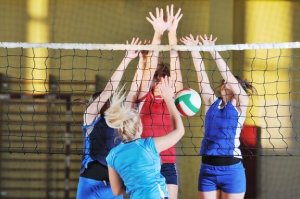
Team sports pit two groups against each other in the rivalry. The teams muster the joint efforts of their individual members to beat their opponent. These kinds of sports build sportsmanship and dedication. In our post today, we’re going to list the best team sports to get in shape while having fun at the same time.
Team sports allow players to develop relationships in order to reach common goals. These goals call upon each member of the group, requiring them to use different techniques together to score points.
Every sport has its own rules and every player plays a position that matches his or her strengths and abilities. From that perspective, trusting team members in order to learn how to work together towards victory is essential.
What are the best team sports?
Team sports offer plenty of health benefits. Some of them include developing social skills and learning to value teamwork. If you’re looking for the perfect sport, think in terms of motivation and age. Check out our list of the best team sports!
1. Basketball: one of the well-rounded team sports
Basketball is a well-rounded sport that’s also hugely popular all over the world. Two teams of five players play against each other and strive to score the most baskets in their opponent’s hoop.
Each basket made scores 2 points while free throws and shots made outside the key are 1 and 3 (worth 1 and 3 points), respectively. In basketball, teamwork is essential whether players power through good plays or guard their rivals effectively.
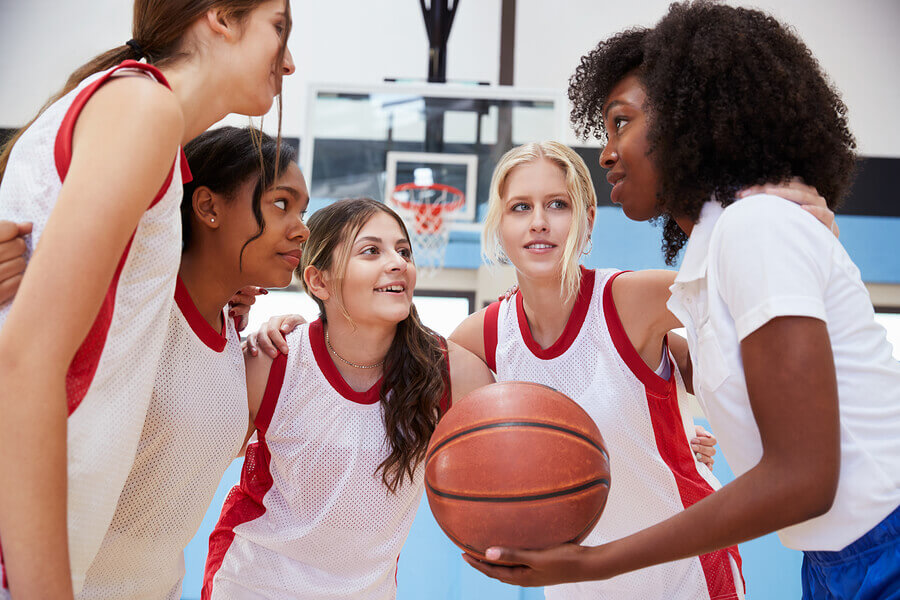
2. Soccer, the ultimate in team sports
Soccer is a classic sport where two teams of 11 players try to pass the ball into the opposing team’s goal by using any body part except their hands and arms. The team that scores more goals wins, meaning that players must work and pass the ball together to secure victory.
Soccer is undoubtedly one of the greatest team sports out there. Of all the sports that use a ball, it’s actually the most popular one if you judge by the numbers of players and viewers. Soccer follows simple rules and you can play it almost anywhere. It’s a sure bet for a good time!
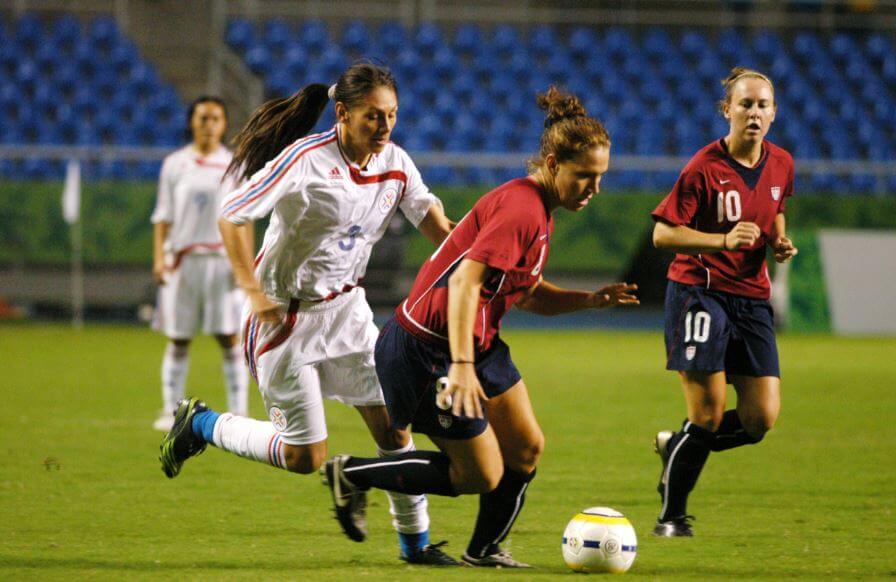
3. Water polo
Water polo is one of the best aquatic sports– or team sports– that you can play. You need three basic skills to play this dynamic sport: swimming, floating and passing the ball. In water polo, the objective is to bring the ball up into the rival side and score in the goal.
Matches take place in swimming pools and pit two teams of seven players against each other: seven players and one goalkeeper. A goal is valid once the ball passes the goal line. Water polo is a dynamic team sport that requires players to be in tip-top shape.
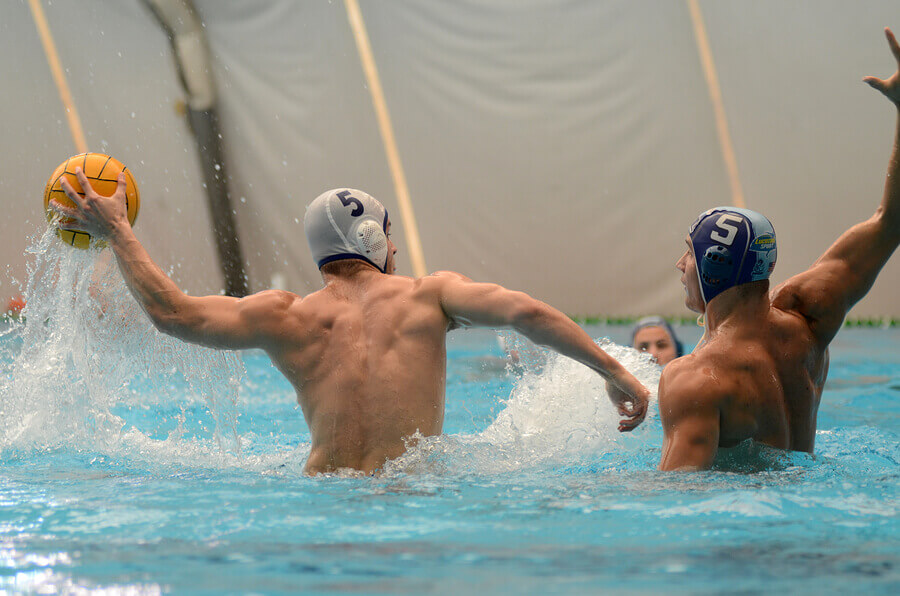
4. Handball
Handball is one of the most technical team sports in the world. While it might be a tricky sport to become skilled in, it’s quite easy to watch and understand for the spectator.
Each team has seven players; six are on the court and one is in the goal. Teams strive to throw the ball into their opponent’s goal. Teamwork is extremely important in handball; both teams must hustle to score more goals than the other.
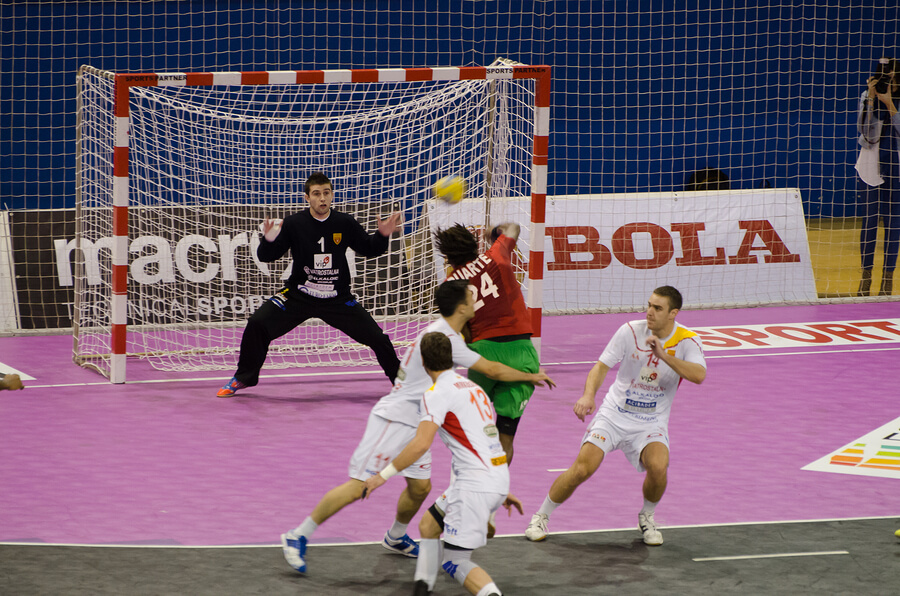
5. Volleyball
Volleyball requires an especially high level of team-coordination as players can only touch the ball once before returning it to a teammate or the opposing team.
In volleyball, there are two teams of six players that play on a rectangular court. This sport requires both leg and arm power. Additionally, it also calls for cooperation and teamwork.
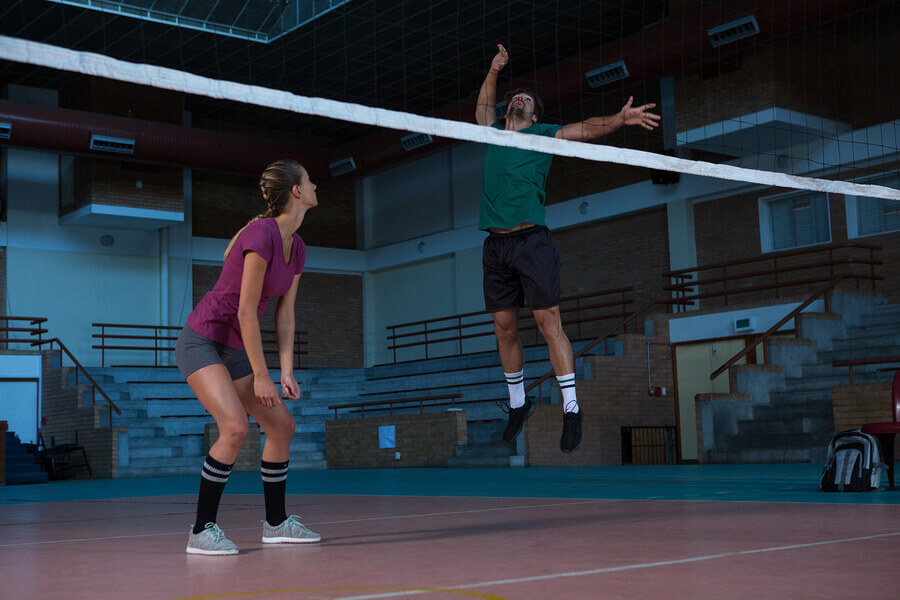
To wrap up, we want to remind you that team members can’t reach the goals laid out by their coach without serious work and especially not without team spirit.
There are all kinds of team sports out there. Now that you know the best ones, it’s time for you to choose your favorite one or the one that best suits your level and physical condition. So, which one do you want to try?
Team sports pit two groups against each other in the rivalry. The teams muster the joint efforts of their individual members to beat their opponent. These kinds of sports build sportsmanship and dedication. In our post today, we’re going to list the best team sports to get in shape while having fun at the same time.
Team sports allow players to develop relationships in order to reach common goals. These goals call upon each member of the group, requiring them to use different techniques together to score points.
Every sport has its own rules and every player plays a position that matches his or her strengths and abilities. From that perspective, trusting team members in order to learn how to work together towards victory is essential.
What are the best team sports?
Team sports offer plenty of health benefits. Some of them include developing social skills and learning to value teamwork. If you’re looking for the perfect sport, think in terms of motivation and age. Check out our list of the best team sports!
1. Basketball: one of the well-rounded team sports
Basketball is a well-rounded sport that’s also hugely popular all over the world. Two teams of five players play against each other and strive to score the most baskets in their opponent’s hoop.
Each basket made scores 2 points while free throws and shots made outside the key are 1 and 3 (worth 1 and 3 points), respectively. In basketball, teamwork is essential whether players power through good plays or guard their rivals effectively.

2. Soccer, the ultimate in team sports
Soccer is a classic sport where two teams of 11 players try to pass the ball into the opposing team’s goal by using any body part except their hands and arms. The team that scores more goals wins, meaning that players must work and pass the ball together to secure victory.
Soccer is undoubtedly one of the greatest team sports out there. Of all the sports that use a ball, it’s actually the most popular one if you judge by the numbers of players and viewers. Soccer follows simple rules and you can play it almost anywhere. It’s a sure bet for a good time!

3. Water polo
Water polo is one of the best aquatic sports– or team sports– that you can play. You need three basic skills to play this dynamic sport: swimming, floating and passing the ball. In water polo, the objective is to bring the ball up into the rival side and score in the goal.
Matches take place in swimming pools and pit two teams of seven players against each other: seven players and one goalkeeper. A goal is valid once the ball passes the goal line. Water polo is a dynamic team sport that requires players to be in tip-top shape.

4. Handball
Handball is one of the most technical team sports in the world. While it might be a tricky sport to become skilled in, it’s quite easy to watch and understand for the spectator.
Each team has seven players; six are on the court and one is in the goal. Teams strive to throw the ball into their opponent’s goal. Teamwork is extremely important in handball; both teams must hustle to score more goals than the other.

5. Volleyball
Volleyball requires an especially high level of team-coordination as players can only touch the ball once before returning it to a teammate or the opposing team.
In volleyball, there are two teams of six players that play on a rectangular court. This sport requires both leg and arm power. Additionally, it also calls for cooperation and teamwork.

To wrap up, we want to remind you that team members can’t reach the goals laid out by their coach without serious work and especially not without team spirit.
There are all kinds of team sports out there. Now that you know the best ones, it’s time for you to choose your favorite one or the one that best suits your level and physical condition. So, which one do you want to try?
All cited sources were thoroughly reviewed by our team to ensure their quality, reliability, currency, and validity. The bibliography of this article was considered reliable and of academic or scientific accuracy.
- Ortín-Montero, F. J., De-la-Vega, R., & Gosálvez-Botella, J. (2013). Optimismo, ansiedad-estado y autoconfianza en jóvenes jugadores de balonmano. Anales de Psicología, 29(3), 637–641. https://doi.org/10.6018/analesps.29.3.175751
- Navarro Patón, R. (2010). Aprendiendo a jugar, jugando al balonmano: Didáctica de los juegos aplicados al balonmano. EmásF: Revista Digital de Educación Física, 2(2), 5–13. Retrieved from http://dialnet.unirioja.es/servlet/articulo?codigo=3175416&info=resumen&idioma=SPA
- García Nozal, J. M., & María, J. (2006). Baloncesto. Baloncesto: ejercicios para el entrenamiento del bote, el rebote y el pase (p. 139). Wanceulen Editorial. Retrieved from http://mendeley.csuc.cat/fitxers/6b8366cc7e6acbbcf1310c282efcf898
- Manonelles Marqueta, P., & Tarrega Tarerro, L. (1998). Epidemiología de las lesiones en el baloncesto. Archivos de Medicina Del Deporte. Federación Española de Medicina del Deporte. https://doi.org/10.1001/archsurg.134.11.1183
- FISU. (2001). Waterpolo. {FISU} Magazine, 12(52 {(Dec.)}), 86–87.
- Delgado, C. D., Burgués, P. L., Lozano, A. P., Martínez, R. M., & Soler, G. P. (1985). Apunts. Educación física y deportes. Apunts. Educació física i esports (Vol. 3, pp. 23–32). Institut d’Educació Física de Catalunya. Retrieved from https://www.raco.cat/index.php/ApuntsEFE/article/view/280838
This text is provided for informational purposes only and does not replace consultation with a professional. If in doubt, consult your specialist.








